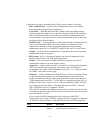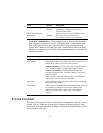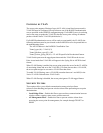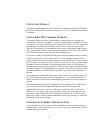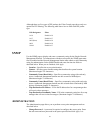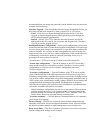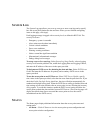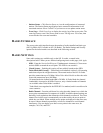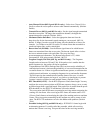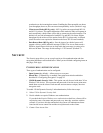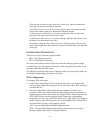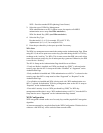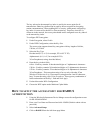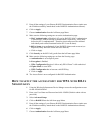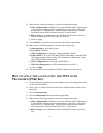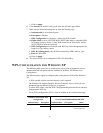40
n Auto Channel Select (802.11g and 802.11a only)—Select Auto Channel Select
Enable to allow the access point to select a radio channel automatically. (Default:
Enable)
n Transmit Power (802.11g and 802.11a only)—Set the signal strength transmitted
from the access point. The longer the transmission distance, the higher the
transmission power required. (Default: 100%)
n Maximum Station Data Rate—Select the appropriate data rate from the
drop-down list for the data transfer speed running on your network. (802.11b
default: 11 Mbps.) In order to reach all clients, this rate should be set lower (for
example, 1 or 2 Mbps on an 802.11b radio). To isolate clients that are unable to
connect at higher rates, set this value higher.
n Beacon Interval (20-1000)—Sets the beacon signal interval at which beacon
frames are transmitted from the access point. The beacon signals allow wireless
devices to maintain contact with each other. They may also carry
power-management information. The Beacon Interval unit is TU, which
corresponds to 1024 microseconds. (Default: 100 TU)
n Fragment Length (256-2346) (802.11g and 802.11a only)—The Fragment
Length can be set between 256 and 2,346. If the packet size is smaller than the
preset fragment size, the packet will not be segmented.
Fragmentation of the PDUs (Package Data Unit) can increase the reliability of
transmissions because it increases the probability of a successful transmission due
to smaller frame size. If there is significant interference present, or collisions due
to high network utilization, try setting the fragment size to send smaller fragments.
This will speed up the retransmission of smaller frames. However, it is more
efficient to set the fragment size larger if very little or no interference is present
because it requires overhead to send multiple frames. (Default: 2346)
n RTS Threshold (0-2347)—Set the RTS (Request to Send) frame length. You may
configure the access point to initiate an RTS frame sequence always, never, or only
on frames longer than a specified length. If the packet size is smaller than the preset
RTS threshold size, the RTS/CTS mechanism will not be enabled.
The access point sends RTS frames to a particular receiving station to negotiate the
sending of a data frame. After receiving an RTS frame, the station sends a CTS
(Clear to Send) frame to acknowledge the right of the sending station to send data
frames. The access points contending for the medium may not be aware of each
other. The RTS/CTS mechanism can solve this hidden node problem. (Default:
2346)
n Preamble Setting (802.11g and 802.11b only)—IEEE 802.11 frames begin with
an alternating pattern of 1s and 0s called the preamble, which tells receiving
stations that a frame is arriving. This provides time for the receiving station to



